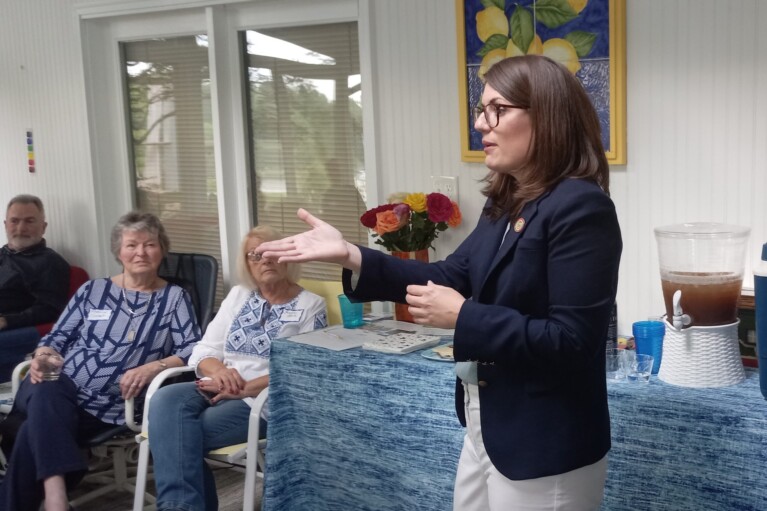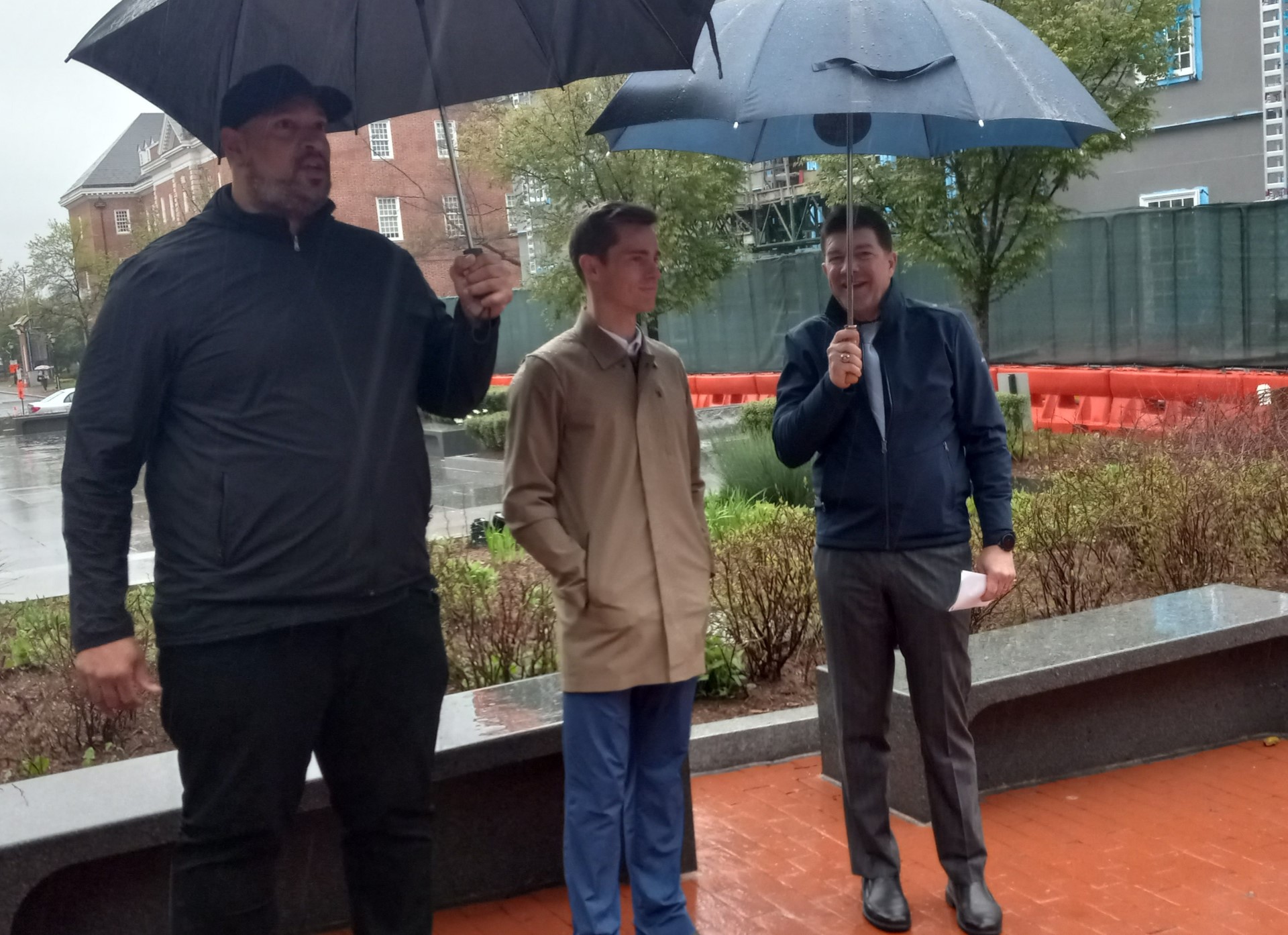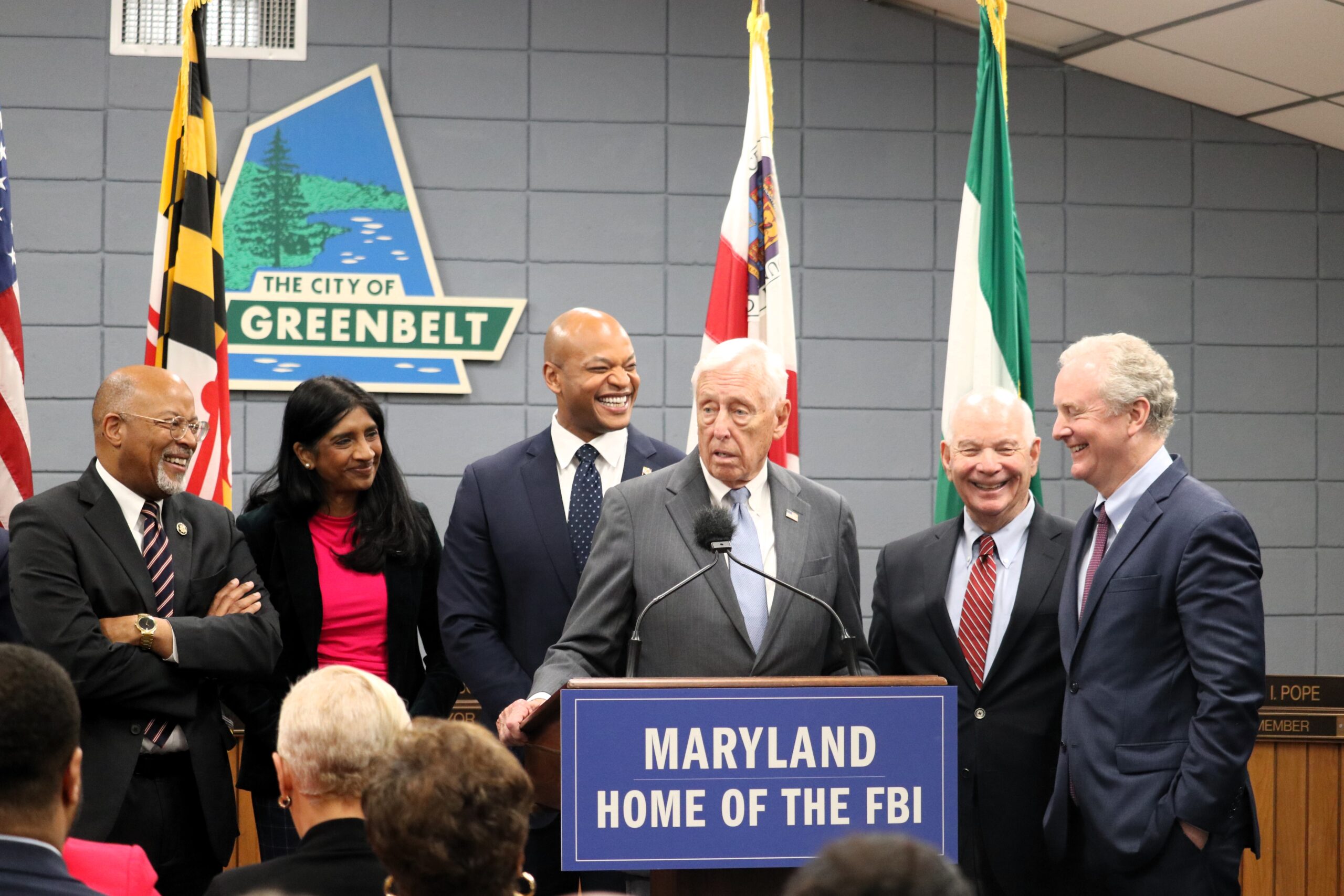Here’s how a Prince George’s Co. facility is making better, safer batteries

It may not be a stretch to say that the future will be powered out of Beltsville — and the future will come faster in the U.S. Army.
A company called ION Storage Systems, which was invented in a lab at the University of Maryland, is now up and running at its production facility in Beltsville.
The company makes what’s known as a solid state battery — with a key component made out of ceramic. But while the material might be the same thing used to make dinner dishes, it’s also extremely flexible while showing marked improvements in several ways over the more common lithium ion batteries that power so many things currently.
“Batteries have a flammable liquid electrolyte. We all know all the recalls because batteries are catching fire,” said ION Storage CEO Ricky Hanna. “So we’ve taken that flammable liquid electrolyte out and we’ve replaced it with our solid state ceramic, which is like ceramic, like a dinner plate. Dinner plates don’t catch fire, right? And so not only is it a safe battery, it’s also a better battery.”
The U.S. Army is the first big contract ION Storage is serving, in part because the batteries are fireproof. But they’re also about 30% lighter than batteries used now, while also generating 40% more power.
When the Beltsville facility is fully up and running, it’ll be producing more than a million batteries per year. By 2027, Hanna expects these batteries to be put inside a lot of the tech used now, whether it’s a phone, car or something else.
“Every automotive company, and every battery company is trying to make solid state batteries. And they’ve been trying, there’s different ways to do it,” said Eric Wachsman, a professor at the University of Maryland who also runs the Maryland Energy Innovation Institute.
Wachsman helped found the company with tech created in his lab, which he said will end up powering phones, laptops or even electric vehicles for much longer than the batteries in use now.
The company began growing in College Park before moving to Beltsville, which isn’t exactly known for its battery manufacturing — but ION Storage sees a huge benefit to being there.
“Batteries and Maryland typically don’t go together,” Hanna said. “But it has actually been a wonderful strategic location. Our first market customer is just 20 minutes away. … Anywhere else, you have to get in a car or I’d have to get a plane for 20 hours to go see how batteries are made.”
Wachsman said someone from Samsung tried to license the technology from him as soon as he started presenting the findings. He rejected that offer.
“If I had done that, this would be made in Korea. That would have been it. I would have gotten licensing income, I would have research money from Samsung. But you would not see economic development in Maryland,” Wachsman said.
The facility in Beltsville, housing the world’s only fully automated solid state battery maker, uses an all-American supply chain, too.
“They’re doing it in a way that eliminates the need for cobalt and nickel and other products that are generated by slave or child labor,” said U.S. Rep Glenn Ivey (D-4th). “And it also protects the United States from having to have manufacturing done overseas.”
As part of Maryland Matters’ content sharing agreement with WTOP, we feature this article from John Domen. Click here for the WTOP News website.




 Creative Commons Attribution
Creative Commons Attribution